
Back in 1817, French author Stendhal visited the Basilica of Santa Croce and was overcome by dizziness, confusion, heart palpitations, and even hallucinations. Since then, Stendhal Syndrome has become a term used to describe any disorders one may experience when viewing a particularly stimulating piece of art. Similarly, fans of mid-1800s Hungarian composer Franz Liszt were so hysterical in his presence, that the term Lisztomania was coined to help define this peculiar psychosomatic phenomenon—an unprecedented reaction to a celebrity at the time. Of course, these days such examples as Beatlemania or Bieber Fever are so commonplace in our society, that the idea of losing one's mind to a celebrity and/or their art is casually brushed off as nothing but a fanatic fad. However, the point still stands: the entertainment industry can be very unhealthy.
And that brings us onto this list. Fifty (often tragic) stories that inspired troubled minds to pursue wrongful acts in the worst of directions, undeniably linked to one form of artistic output or another. Defend our freedom of speech and expression of creativity if you want. Or you can oppose the increasing vulgarity of our entertainment industry as a potentially damaging intrusion on weaker personalities. But as this battle of morals continues, one argument none of us can disagree with is that the TV is teaching our children some messed up things, and the only way to truly ensure your safety is to never leave the house again.

50. The Twilight Saga (Film Series, 2008 - 2012)
Iowa, USA, 2009Let's kick this list off as softly as possible, with one unnamed 13-year-old boy who was so moved by the Twilight Saga that he went around biting his school mates like a cheeky little vampire. 11 in total reported the violation and the child was given a delayed referral to a juvenile court on an assault charge, to which his father stated that his son “meant no harm” and had got a bit too “carried away” when he watched the films. I agree!

49. Child’s Play 3 (Film, 1991)
Merseyside, England, 1993Although the connection was never confirmed, many blamed a scene in Child’s Play 3 for what happened to two-year-old James Bulger. Remember when Chucky was splashed with blue paint? That’s what 10-year-olds Robert Thompson and Jon Venables did to victim James. In his eyes. They then went on to kick him, throw bricks at him, stick batteries into his mouth and anus, and then finally dropped a 10 kilo iron bar onto his head. The toddler suffered 42 nauseating injuries in total, making the fatal blow indeterminable and even irrelevant as the boys were locked up for a mere 10 years due to their age group. This incident led to some new legislative clarification for films and their availability to minors, which is one good thing to come out of this at least.

48. 13 Reasons Why (TV Series, 2017)
Arequipa, Peru, 2017In a move that so many worried parents had previously predicted, the most recent event on this list came when Franco Alonso Lazo yelled that he couldn’t “stand a heartbreak”, as he jumped from his fourth story apartment balcony, dying from his injuries a few hours later. He recorded audio files on his computer, addressed to (and blaming) specific individuals who he felt were responsible for his suicide, and while the connection to 13 Reasons Why was never explicitly stated, it all seems eerily obvious to anyone who has watched the show. Even more unsettling is how many schools and media outlets got to say “I told you so,” while the rest of us fear that this won’t be the last of the practice.

47. Gears of War 3 (Video Game, 2011)
Clydebank, Scotland, 2012After getting into an argument whilst playing the 18-rated Gears of War 3 game, an undisclosed 13-year-old boy slashed his friend’s throat with a knife, casually instructed “don’t die” as he walked away. The injury was so severe that it required 20 staples to close the windpipe, and the incident provoked the public to beg for a second look into smarter ways to prevent children from playing adult-rated games. Personally, I think we should take a third look. As many looks as it takes, really.

46. Duke Nukem 3D (Video Game, 1996)
São Paulo, Brazil, 1999According to his lawyers, Mateus da Costa Meira suffered from hallucinations, heard nonexistent voices, and played Duke Nukem 3D non-stop, all of which should have been enough for the court to forgive the man after he fired a 9mm submachine gun into a cinema audience, killing three and injuring four. However, the court were having none of it, and sentenced Meira to more than 120 years and six months in prison, which basically means forever.

45. Fifty Shades of Grey (Film, 2015)
Illinois, USA, 2015In one of the more recent examples on this list, Mohammad Hossain admitted to the court that he was re-enacting a Fifty Shades of Grey scene when he bound the hands and legs of a woman, shoved a necktie in her mouth, and beat her with a belt, all the while continuously sexually assaulting her for an undisclosed amount of time. However, despite the victim stating that she had begged him to stop, Hossain was adamant that the act was consensual, as the two had been intimate before. And he won. Cleared of all charges. Which doesn’t seem particularly fair to me, but what do I know? I wasn’t there.
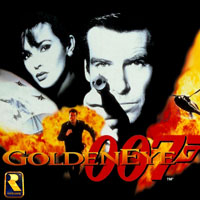
44. GoldenEye 007 (Video Game, 1997)
Arkansas, USA, 1998Here we have among the youngest people to have ever been charged with mass murder: 13-year-old Mitchell Johnson and 11-year-old Andrew Golden, who were responsible for the Westside Middle School massacre, an attack where they shot and killed four students, one teacher, and injured ten others in the deadliest bloodbath at an American middle school. Due to their youth, they were each sentenced to confinement until the age of 21, a ruling that lead to a public outcry for harsher juvenile sentencing, which made even more sense when both individuals were arrested after their release, again for gun-related issues. However, it was only post-Columbine High School massacre that the case was reinvestigated in a new light, and here it was discovered that the pair had often played GoldenEye 007 together, which may or may not have contributed to their actions.

43. Manhunt (Video Game, 2003)
Leicestershire, England, 2004Marketed as a violent “psychological experience” rather than video game, this executioner simulation piece was perhaps the final blur needed for Warren Leblanc’s reality to fall over. He repeatedly stabbed and beat his 14-year-old friend Stefan Pakeerah in the head with a hammer, a crime so brutal that Leblanc received a life sentence immediately after pleading guilty. The victim’s mother claimed that she’d heard Leblanc confess his obsession for the game, which was further demonstrated when a copy of Manhunt was confiscated as evidence from Warren’s bedroom.

42. Kill Bill: Volume 1 (Film, 2003)
Leicestershire, England, 2006Whilst drinking heavily and watching Kill Bill, Sean Wilson and his schoolboy friend decided that they’d had enough of Wilson’s mentally ill “nuisance” neighbour, Joanne Butler. So they beat her sleeping body with a sock filled with stones, a metal bar, and then an axe, until she was dead. They then stabbed the body once just to make sure, set the flat on fire, and filmed the blaze from their mobile phones. Wilson went directly to jail for this, do not pass go, do not collect $200, for the rest of his life.
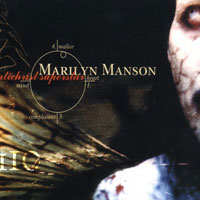
41. Marilyn Manson - Antichrist Superstar (Album, 1996)
Multiple IncidentsWhilst Marilyn Manson’s unfair position as the primary scapegoat for the Columbine shootings has been widely disputed, his leadership into the darkness has still come with some heavy side effects. For example, 14-year-old Asa Coon (Ohio, USA, 2007) shot four people before committing suicide whilst wearing a Marilyn Manson shirt. 15-year-old Justin Doucet’s (Louisiana, USA, 2009) dedication, however, was much more telling, as he commanded his seventh grade teacher to say “Hail Marilyn Manson”, and when she refused to comply, he fired two shots at her, missed both times, and then shot himself dead. And while neither of these incidents can be exclusively accredited to Antichrist Superstar, this piece remains Manson’s most popular and highest selling album (seven million worldwide), making it one very dangerous guide for lost children looking for answers in all the wrong places.

40. The Dark Knight Rises (Film, 2012)
Colorado, USA, 2012I’m sure we all remember James Eagan Holmes. He was that guy who dyed his hair red and shot up a cinema screening of The Dark Knight Rises, killing 12 people and injuring around 70 others. Due to his eccentric appearance and choice of film, frantic rumours multiplied, some claiming that Holmes called himself “the Joker”, and others reporting that his house was full of Batman merchandise, although none of this was ever confirmed. Regardless, the shooting still totals with the third largest amount of casualties in any US shooting, and the deadliest in Colorado since the Columbine High School massacre, which left James Eagan Holmes with a whopping 12 life sentences for the deceased, plus an additional 3,318 years for the wounded and potential wounded from his rigged apartment. Following this tragedy, tensions were high at every Dark Knight show, with various arrests over fake gun and bomb threats taking place, even if thankfully none of these turned out to be anything but mass hysteria plaguing America.

39. Interview With the Vampire (Film, 1994)
San Francisco, USA, 1994After watching this vampire film and then going to bed, Lisa Stellwagen awoke to find her boyfriend Daniel Sterling staring at her. When she asked him what was the matter, Sterling responded “I’m going to kill you and drink your blood”. He gave it a good go, stabbing Stellwagen and sucking on her wounds until, in desperation, she fearfully warned him that her death would result in a prison sentence. This reminder did manage to stop Sterling’s wrongdoing, but he still went to jail anyway, facing potential life imprisonment, all the way telling police “I was influenced by the movie. I enjoyed the movie. But I cannot sit here and blame the movie.”
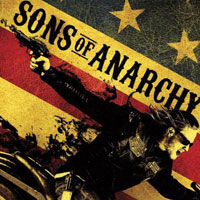
38. Sons of Anarchy (TV Series, 2008 - 2014)
Florida, USA, 2012It didn't take many episodes of the Sons of Anarchy TV series to give Maynard Kenneth Godwin the bright idea of starting his own gang called “The Guardians”, and the crazy guy actually pulled it off too. With the help of his friends, he sold drugs, stole hundreds of thousands of dollars worth in jewelry and guns, and even once beat a man near to death because he had paid for his rent with counterfeit money. This behaviour resulted in “The Boss” getting 30 years in prison, while his club mates were not far behind. Behind bars, that is.

37. Björk - Debut (Album, 1993)
Florida, USA, 1996Although one could never blame this album directly, Ricardo López’s obsession with Björk took flight soon after her Debut release. His fanatical fixation has been well documented thanks to an 803 page diary dedicated to the Icelandic singer, as well as 22 hours of video footage where his erratic fantasies became increasingly dangerous, including one where he believed he could time travel to the 1970s and make friends with her. These delusions all came to a shattered end when he mailed a letter bomb to Björk and then shot himself dead through the mouth on film “to meet her in heaven”. Thankfully, said bomb was intercepted and defused by police, but Björk was still understandably “very distressed” by the incident.

36. Halo 3 (Video Game, 2007)
Ohio, USA, 2007After a skiing injury, Daniel Petric was housebound and passed the boring time by playing Halo 3 continuously, sometimes for up to 18 hours without any breaks. His concerned parents had already forbidden the game in the house, and when they found a copy in the boy's possession, they confiscated it, unaware that Daniel could no longer comprehend the difference between video game and real life deaths. He retrieved his father’s gun, shot both of his parent’s point blank, and attempted to cover it up as his dad’s own murder suicide. No such luck, Daniel, as the judge sentenced him to life in prison, with the possibility of parole in 23 years due to his young age of 16.

35. U2 - Exit (Song, 1987)
Arizona, USA, 1989Model/actress Rebecca Schaeffer had her promising career cut short when stalker Robert John Bardo shot and killed her after concluding that she had lost her innocence due to a love scene in Scenes from the Class Struggle in Beverly Hills. His lawyer fervently defended that it was U2’s song Exit which had influenced his actions, due to its lyrical themes portraying the mind of a serial killer. When the track was played to the court, the usually motionless Bardo reportedly sprang to life, grinning, slapping his knee, and mouthing the lyrics. Horrible, but not enough to shift the blame, as Robert was convicted of first-degree murder, and is still serving his life sentence today.

34. Mortal Kombat (Video Game Franchise, 1992 - 2016)
Multiple IncidentsNo surprises here that one of the most controversial video game developments of all time came with its fair share of life imitations. Yancy Salazar stabbed Noah Wilson in the chest with a kitchen knife (Connecticut, USA, 1997), a murder that prompted the victim’s mother to take Midway Games to court, citing that Salazar was mimicking a fatality of character Cyrax. In the end, no such Cyrax fatality even existed, and she lost the case. Elsewhere (Colorado, USA, 2007), a drunk Heather Trujillo and her equally drunk martial artist boyfriend, Lamar Roberts, acted out some MK moves on her seven-year-old sister, Zoe Garcia. After breaking her wrist, beating blood from her neck muscles, and tearing skin near her tongue, tiny Zoe stopped moving. The duo thought she was faking her death, and so they cracked a raw egg in her mouth, watched it slide down her throat, and realised that they had indeed killed her. Heather got six years while Mortal Kombat marches on.

33. Neon Genesis Evangelion (Anime Series, 1995 - 1996)
Yamagata Prefecture, Japan, 2003When Hiroyuki Tsuchida finished watching Neon Genesis Evangelion, he naturally came to the realisation that “the ultimate conclusion of human evolution is ruin” and all people needed to be eliminated. In order to desensitise himself to the killings, he opted to begin with his own mother, who he beat to death with a baseball bat. And that’s as far as he got, as he was caught soon afterwards and received 14 years in prison, which is hopefully enough time for him to get his act together.

32. Defiance (Film, 1980)
California, USA, 1982In a classic type of love tale, Arthur Richard Jackson watched Defiance, fell in love with actress Theresa Saldana, stalked her down, and then stabbed her ten times in broad daylight, so forcefully that the knife bent. Miraculously, Saldana recovered and Jackson spent the rest of his life bouncing around prisons and psychiatric hospitals, continuously making further threats towards Saldana’s life until he died himself in 2004 whilst incarcerated. Interestingly enough, his methods of celebrity attack were a big inspiration to Robert John Bardo and that Rebecca Schaeffer murder story, one we’ve already covered in item #35 of this list.

31. Metallica - Ronnie (Song, 1996)
New Jersey , USA, 2004The song Ronnie tells the story of an emotionless child who shot up his town, and that was all the encouragement Ronald Pituch needed, claiming this Metallica composition inspired him to bludgeon his mother to death with a barbell, then killing a random 11-year-old boy with a knife shortly afterwards. He may have been a paranoid schizophrenic who refused to take his meds, as well as the self-proclaimed “son of Satan”, but the court decided 50 years behind bars was the best place for Ronnie.

30. Nightmare on Elm Street (Film, 1984)
London, UK, 2004Daniel Gonzalez earned the nickname as the “Freddy Krueger Killer” due to the letters he wrote to his alter ego “Zippy”, comparing himself to the Nightmare on Elm Street monster, and stating that his stabbing of four random victims to death was “orgasmic” and "one of the best things I've done in my life". He was discovered naked and covered in blood, arrested, and became a heated topic of debate due to his various illnesses that the NHS reportedly did not approach correctly, including bouts of schizophrenia and a severe drug addiction. His mother even once asked "does my son have to commit murder to get help?" but these pleas fell on deaf ears, and he was given six life sentences. After the trial, Gonzalez initially failed to kill himself by biting through an artery in his arm, but eventually succeeded by slicing his wrists apart with broken CD cases. Yeech, talk about dedication.

29. 2Pac - Soulja's Story (Song, 1991)
Multiple IncidentsAs one would expect from any 2Pac inspired crime, these stories extended from an animosity towards the police force, especially when looking at a song like Soulja’s Story which illustrates the struggle of a young black male who shot a cop. When Ronald Ray Howard (Texas, USA, 1992) fired upon and killed a Texas Highway Patrol Trooper, these were the sounds on his headphones, the last song he heard before being arrested and ultimately sentenced to death. Similarly, Curtis Walker (Wisconsin, USA, 1993) and a nameless friend blamed a 2Pac inspiration when they shot a policeman with a sniper rifle, and each ended with a life sentence. It was a stupid idea to begin with.

28. Ozzy Osbourne - Bark to the Moon (Album, 1983)
Canada, 1983No one listened to James Jollimore when he warned them that Ozzy’s Bark at the Moon made him feel “strange inside”, until New Year's eve 1983 when he put the album on and then promptly went outside to stab a woman and her two sons to death. He was charged with first-degree murder whilst Ozzy added the incident to his list of troubles, as not long before, he had faced accusations that his song Suicide Solution had driven another fan to kill himself. Thankfully, Ozzy’s reality TV show a couple of decades later stopped everyone from taking him so seriously.
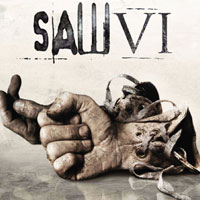
27. Saw VI (Film, 2009)
London, UK, 2012I might be wrong, but I feel like it’s safe to primarily blame Matthew Tinling’s crack cocaine addiction for stabbing his flatmate 17 times to death in an attempt to get a pin number, but his idea to chop through the victim’s spine was recognised by the court as a direct imitation of Saw VI, a Hollywood torture film found in Tinling’s room. This merciless action got Matthew locked up for at least 30 years, but potentially the most surprising aspect of this story was that a film as bad as Saw VI managed to inspire anyone to do anything.

26. RoboCop 2 (Film, 1990)
New York, USA, 1991-1992Serial killer Nathaniel White was sentenced to 150 years after being found guilty of beating and stabbing six women to death whilst on parole. His statement included the chilling confession that “the first girl I killed was from a RoboCop movie... I seen him cut somebody’s throat then take the knife and slit down the chest to the stomach and left the body in a certain position. With the first person I killed I did exactly what I saw in the movie." That’s an undeniable direct influence if there ever was one.

25. Death Note (Manga Series, 2003 - 2006)
Brussels, Belgium, 2007Death Note tells the story of a supernatural notebook which grants the user the ability to murder anyone whose name is written in it, and that was enough of an exciting concept for Sidi Mohamed Atir, Abdessamad Azmi, and Zacharia Benaissa to mutilate and cut up a man so viciously that his identity has never been established. Due to a note found next to the body, the connection was made, the “Manga Murder” was coined, and the perpetrators managed to roam free for over three years until they were caught, each sent to prison for at least 20 years. The influence did not stop there either, as various other (thankfully non-fatal) copycat crimes have since been reported. Maybe don’t watch this series then.

24. Drowning Pool - Bodies (Song, 2001)
Multiple Incidents“Let the bodies hit the floor!” may be a lyric about a moshpit, but it’s easy to see why Joshua Cooke (Virginia, USA, 2003) misconstrued it as an instruction to shoot both of his parents dead, confessing "I had been listening to the song for about a year nonstop. And I just knew that I had so much hate and rage inside of me, that I knew it was leading to murder”. He is currently serving 40 years for the double killing. Jared Loughner’s story (Arizona, USA, 2011) was even worse, people pointing out that he only ever favourited one YouTube video from his account (this song), before attempting to assassinate US Representative Gabrielle Giffords by shooting her in the head. She survived, but six other bystanders did not, which is why the diagnosed paranoid schizophrenic was sentenced to seven consecutive life terms plus 140 years in prison without parole. Drowning Pool naturally issued a statement claiming they were “devastated” and tried to once again explain what the lyrics actually meant. It’s a moshpit! Stop killing people, please!

23. Combat Arms (Video Game, 2007)
Connecticut, USA, 2012When Adam Lanza fatally shot his mother, then 20 school children aged between six and seven, then six adult staff members, then himself (a wreckage known as the Sandy Hook Elementary School shooting), everyone was looking for anything to blame. The general majority accused the boy’s obsession with Combat Arms, a video game in which he partook in 4,901 matches for over 500 hours, amassing an “impressive” 83,496 kills and 22,725 head shots without using any cheat codes. Then again, others dismissed the connection to be nothing but speculation, as Adam also adored such games as Dance, Dance Revolution and Super Mario Brothers too, not to mentioned that he was known to hide disturbing images of mutilated corpses and murdered children under his bed anyway, so deeper issues here really. Regardless, this was the deadliest high school shooting and the third-deadliest mass shooting by a single gunman in United States history, which prompted many political debates about video game violence. One such debate was even between then vice president, Joe Biden, and representatives from the gaming industry, who all concluded that we could not exclusively blame video game violence for the tragedy that had occurred. We never said exclusively, Biden!

22. Halloween (Film, 2007 remake)
Texas, USA, 2012After watching Halloween three times in one week, 17-year-old Jake Evans was fascinated by the lack of remorse from the Michael Myers villain, and wondered to himself whether “it would be the same for me when I kill someone”. He then proceeded to find out, by shooting both his mother and sister multiple times until he was certain they were dead, and then called the cops on himself. He expressed deep regret over his actions when the court sentenced him to 45 years in prison.

21. Rezső Seress - Gloomy Sunday (Song, 1933)
Budapest, Hungary, 1930s and onwardsSome tales grow legs and run so far away into folklore that it becomes impossible to differentiate fact from fiction, which was exactly the case with the “Hungarian Suicide Song”, Gloomy Sunday. Rumour has it that the aptly titled track was so depressing that 19 separate incidents of suicide were connected to it, including a teenager drowning herself whilst clutching the sheet music; a shopkeeper leaving these lyrics behind as his suicide note; a woman overdosing with the record playing on loop; a boy jumping off of a bridge when he heard a beggar humming the tune; a lady gassing herself after requesting the song be played at her funeral; and even Rezső’s ex-fiancee committing suicide with only the words “Gloomy Sunday” left as her note. But whatever you chose to believe, the song’s reputation was solidified when the composer himself jumped out of a window a few decades later, surprisingly surviving the fall, only to strangle his throat to death in the hospital a few hours later.

20. Slipknot - Disasterpiece (Song, 2001)
California, USA, 2003Slipknot have come under fire more than once for their troublesome persistence of exhibiting distressing imagery, which included the time Morné Harmse attacked four people (killing one) with a samurai sword whilst wearing a Japanese Noh mask like drummer Joey Jordison. But it was their song Disasterpiece specifically that was blamed for Jason Lamar Harris and Amber Rose Riley actions, after they stabbed Terry Ray Taylor more than 20 times before slashing his throat. The killer duo claimed they were listening to this song to build up enough courage to carry out the murder, finding particular inspiration in the line “I wanna slit your throat and fuck the wound”, lovely. They each received 50 years to life in prison, while Slipknot singer Corey Taylor claimed to be “disturbed” by the incident, denying he ever wanted anyone to kill anyone, and encouraged his fans to “stick together and help each other” instead. That’s weird. I’ve never heard him sing about that before.

19. Final Fantasy VIII (Video Game, 1999)
Murcia, Spain, 2000José Rabadán Pardo took it upon himself to avenge and emulate Squall Leonhart, the main character of the video game Final Fantasy VIII, whose mission it was to fight the "power of dictators and oppressors". He took this definition to mean his parents, and killed them both along with his sister using a katana. He fled, was caught, and eventually sentenced to 12 years in a therapeutic centre, an institution he has already escaped from once.

18. Fight Club (Film, 1999)
Multiple IncidentsUnsurprisingly, this cult classic film about starting fight clubs, inspired many people to start fight clubs, including a group of six teenagers (Texas, USA, 2006) who beat up an unwilling participant and then sold their brawl on DVD; and two Lightbridge Academy employees (New Jersey, USA, 2015) who Snapchatted fights they instigated between children aged four to six. But the real trouble came with the Project Mayhem aspect of the film, when an unnamed 17-year-old (New York, USA, 2009) detonated a homemade bomb outside of a Starbucks after having formed his own fight club. And then there was Lucas John "Luke" Helder (Minnesota, USA, 2002) who took it one step further, by planting pipe bombs in mailboxes all over Nebraska, Colorado, Texas, Illinois, and Iowa in an attempt to create a full burning smiley face on the map of USA. 18 bombs covering 3,200 miles were discovered, six people were injured, and Helder was diagnosed with schizoaffective disorder, still incarcerated today without ever completing that full burning smile.

17. Queen of the Damned (Film, 2002)
Edinburgh, Scotland, 2002Allan Menzies earned the nickname “the vampire killer” for good reason. As he told the court, he received a vision from the Queen of the Damned central character, Akasha, the fictional vampire who appeared before him and promised him immortality in exchange for a murder. Which he did, by beating Thomas McKendrick on the head around ten times with a hammer, then stabbing him at least 42 times all over his body. Allan then proceeded to drink some of his victim’s blood, ate part of his skull, then buried him in a shallow grave which took weeks for authorities to find. But did Menzies become an immortal vampire just like Akasha promised? I’m not sure, but if he did, it won’t do him much good as he lives out the rest of his days in jail.

16. Scream Franchise (Film Series, 1996 - 2011)
Multiple IncidentsThe iconic Scream mask may have haunted many of our dreams, but it haunted many victim’s real lives too. The "Scream murder" case got its name when Mario Padilla and his cousin Samuel Ramirez stabbed Mario’s mother 45 times, killing her in hopes of stealing her money to purchase two Ghostface costumes, both still facing up to life sentences (California, USA, 1998). Thierry Jaradin murdered 15-year-old Alisson Cambier whilst wearing the mask (Gerpinnes, Belgium, 2001). And the "Scream attackers" Daniel Gill (14) and Robert Fuller (15) watched the film, drew pictures of the Ghostface mask, and then stabbed Ashley Murray multiple times in the head (California, USA, 1998). They were found guilty of attempted murder, given a minimum six-year sentence due to their age, served only three of those, and then moved back home, just around the corner from their victim. Sadly, these examples are only a few of the most famous copycat stories this franchise has inspired, so you should be scared.

15. The Matrix (Film Trilogy, 1999 - 2003)
Multiple IncidentsThe Matrix Defense has somehow become a commonly used legal term in recent years, due to several cases where the defendant claims they did not believe they were part of the real world, and so they did whatever they wanted to do. Lee Boyd Malvo’s told FBI agents to watch the film if they wanted to understand why he killed ten people (Washington, D.C, USA, 2002). Joshua Cooke considered using this defense when he murdered his adoptive parents (Virginia, USA, 2003). Tonda Lynn Ansley shot her landlady in the head, believing that the victim had been controlling her dreams and committing crimes in The Matrix, which was so out there that she was found not guilty by reason of insanity (Ohio, USA, 2002). And finally, Vadim Mieseges claimed he has been “sucked into The Matrix” which is why he skinned and dismembered his 47-year-old landlady, and even though the meth probably had something to do with it, he too was declared mentally incompetent, and wasn’t even allowed to stand trial (San Francisco, USA, 2000).

14. Slayer - Postmortem/Dead Skin Mask (Songs, 1986/1990)
California, USA, 1995Jacob Delashmutt, Joseph Fiorella, and Royce Casey were said to have received strict instructions from Slayer to "stalk, rape, torture, murder, and commit acts of necrophilia" on 15-year-old Elyse Marie Pahler, a crime they confessed to as a necessary "sacrifice to the devil" in hopes of achieving recognition for their own heavy metal band. They are currently serving 25 years to life, but the victim’s parents didn’t stop there, taking the band Slayer to court, claiming the artists "knowingly distributed harmful material to minors." Pahler's family lost the case, as the judge determined that he could not see the direct connection, rather that these killers were just very naughty people.

13. The Deer Hunter (Film, 1978)
Multiple IncidentsQuite an unusual entry would be that of the 1978 Vietnam War film, The Deer Hunter—or more specifically, its infamous Russian roulette scene—which inspired so many copycat cases that it becomes difficult to differentiate from them all. Ted Tolwinski, David Radnis, Daniel Bouley, James R. Groeneveld, William Dillon Gates, Brandon Accardi, and two unnamed teenagers were just a handful of separate individuals who watched the film and then shot themselves whilst emulating the game straight afterwards, and there were many, many more reported. So many, in fact, that no one knows for sure how many suicides have stemmed from the film, but it’s safe to say that the direct yet independent casualties inspired by this movie alone leaves a confirmed self-inflicted death count above any other on offer.
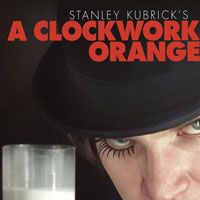
12. A Clockwork Orange (Film, 1971)
Multiple IncidentsHere is another controversial film with so many tales attached to it that we don’t have enough time to cover them all. There have been at least two rapes reported where the attackers sang Singin’ in the Rain in admiration of that scene. Even more violent attacks were carried out, one by a 14-year-old by who murdered a classmate after watching the Kubrick classic, and another by a 16-year-old boy who pleaded guilty to murdering an elderly homeless man after telling police that the film inspired “the beating up of an old boy like this one". The defense told the court that “the link between this crime and sensational literature, particularly A Clockwork Orange, is established beyond reasonable doubt”, and as a result, the film was withdrawn from British release in 1973 at the request of Kubrick himself.

11. Bug (Film, 2006)
London, UK, 2007After watching the horror film Bug, millionaire insurance executive Alberto Izaga suffered from "an episode of acute mental illness which had a rapid onset" according to doctors. He began to hallucinate, heard voices, and believed his family were possessed by the devil. He also mentioned that he was a member of a sect based on the philosophies of the Jesuits and they were trying to take over the financial world, which is worryingly specific. Regardless, after not sleeping for 72 hours, he decided he needed to kill his two-year-old daughter, and did so by repeatedly smashing her head against the wooden floor well beyond her life. When police arrived half an hour later, Izaga spoke about how God doesn’t exist, chanted "Big Ben, Big Ben, Big Ben" for five minutes, and then licked the face of a neighbour. He was found not guilty by reason of insanity, and is currently incarcerated in a psychiatric hospital.
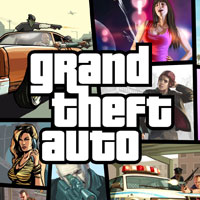
10. Grand Theft Auto (Video Game Series, 1997 - 2013)
Multiple IncidentsThe list of violent crimes that prosecutors have heard to be somewhat inspired by GTA are so exhausting that I will only be detailing very few. Zachary Burgess (Louisiana, USA, 2013) struck nine vehicles with a stolen truck and held a female passenger hostage because he "wanted to see what it was really like to play the video game Grand Theft Auto”. Teenage stepbrothers, Joshua and William Buckner (Tennessee, USA, 2003) told investigators that GTA III had given them the idea to fire a rifle into moving cars, killing a 45-year-old man and wounding a 19-year-old woman, which is why they live in a juvenile detention center to this day. Following his arrest after stealing a car, Devin Moore (Alabama, USA, 2003) shot and killed two policemen and a dispatcher with one of the officer’s guns, claiming GTA: Vice City had taught him the move which put him on death row for 12 years and counting. 16-year-old Dustin Lynch (Ohio, USA, 2002) pleaded insanity due to his obsession with GTA III, claiming he played the game for hours at the time, which is why he stabbed JoLynn Mishne to death, earning him life in prison. And finally, there’s 14 year old ldon Samuel III (Idaho, USA, 2014), who shotgun murdered his father and brother, receiving a life sentence no matter how much he assured officers that it was GTA 5’s fault. If you’ve played the game, you’ve probably wondered about a few of these things yourself at some point, be honest.

09. Slenderman (Fictional Character, 2009)
Multiple IncidentsThe supernatural character born on the internet known as Slenderman has the unique and peculiar ability to climb into young (usually female) children’s heads and convince them to commit the most unsettling of acts. An unidentified 13-year-old attacked her mother with a knife after writing her own macabre fiction often involving the Slenderman (Ohio, USA, 2014). A 14-year-old girl visited a website which told stories of the the character and then set her house on fire with her family trapped inside (Florida, USA, 2014). But the most famous story of all was that of two 12-year-old girls who believed they needed to kill in the Slenderman name in order to prove their loyalty to the figure and be granted permission into his mansion, which they attempted by stabbing their friend 19 times (Wisconsin, USA, 2014). Thankfully, they missed her heart by just a millimeter which saved her life, and (while their trials still await) their acts have been immortalised in the documentary Beware the Slenderman.

08. Call of Duty (Video Game Series, 2003 - 2016)
Multiple IncidentsThe Call of Duty video game has fallen under much scrutiny fire after numerous accusations called it the ideal target practice for wannabe killers. Tristan van der Vlis, for example, was obsessed with the game before he fired more than 100 rounds into a shopping mall, killing six people and then himself (Alphen aan den Rijn, Netherlands, 2011), leaving behind the deadliest assault in the Netherlands since the 2009 attack on the Dutch Royal Family. Another (even worse) Call of Duty slave worth mentioning would be Anders Behring Breivik, a far-right terrorist responsible for the 2011 Norway attacks in Utøya. He killed eight people with a bomb, and then shot 69 more (mostly children) dead at a Workers' Youth League summer camp. His manifesto called Call of Duty: Modern Warfare 2 his "training-simulation", and stated that it “helped him gain target acquisition”. For his 77 person deathtoll, he only received 21 years in prison, which alarmingly, is the maximum penalty in Norway.

07. Rage by Stephen King [as Richard Bachman] (Novel, 1977)
Multiple IncidentsWhen Stephen King wrote Rage, he had no idea how deep his depiction of a school shooting would resonate with a frustrated younger generation across America. Jeffrey Lyne Cox read it over and over before he held a class of 60 students hostage for 30 minutes with a semi-automatic rifle (California, USA, 1988). Police found a copy of Rage with Dustin L. Pierce’s belongings after a nine hour standoff when he took a history class hostage with a shotgun and two handguns (Kentucky, USA, 1989). Scott Pennington shot and killed his English teacher Deanna McDavid because she gave him a C-grade on an essay which he wrote about this very novel, receiving a life sentence (Kentucky, USA, 1993). Barry Loukaitis also found himself in prison for life when he shot up his algebra class (Washington, USA, 1981), killing three people (including his teacher), his statement confessing that he based his life on Charlie Decker, the book’s protagonist (as well as finding some additional guidance from Pearl Jam’s music video for Jeremy, which is a different story). And finally, Michael Carneal opened fire on a prayer group, killing three, injuring five, and receiving life just like everyone else did (Kentucky, USA, 1997). When a copy of Rage was found in this kid’s locker, King decided enough was enough, and let the book run out of print.

06. Doom (Video Game, 1993)
Multiple IncidentsAs the “deadliest high school shooting in US history”, it’s no oversight that the infamous Columbine High School massacre has mentions scattered throughout this article. The entire world seemingly scanned any form of media they could point their fingers towards, blaming everyone but themselves, with the Doom video game taking the biggest fall. The reasons are many: Harris uploaded self created playable Doom maps (now known as the “Harris Levels”) to his own websites, the notably violent files accompanied by texts of hatred towards the world; his diary fantasised about placing the whole population in a super Doom game and seeing who survives; and he even once once wrote a Doom-based story for a creative writing class, to which his teacher commended his gruesome writing style as “unique”. It’s a pity that not she nor anyone else noticed these warning signs, and we were left with 12 dead students, one dead teacher, and the two perpetrators who shot their own brains out at the end of it all.

05. Dexter (TV Series, 2006 - 2013)
Multiple IncidentsThe endless list of this TV show’s copycat murders almost make sense when you imagine a disturbed viewer finding some connection with the series’ detached serial killer, Dexter Morgan. Mark Andrew Twitchell (Alberta, Canada, 2008) killed John Brian Altinger in the protagonist's name, reportedly watching every episode he missed in his jail cell after conviction. Elizabeth Thomas was a model citizen, known for defending her autistic boyfriend Steven Miles (Surrey, London, 2014) on many occasions, a love he rewarded by stabbing her to death, dismembering her legs and an arm, then wrapping them up in clingfilm, describing her as his “project”. His admission that he was emulating Dexter got him jailed for 25 years. Then there was Andrew Conley (Indiana, USA, 2009) who strangled his ten-year-old brother to death, stating he felt just like Dexter when doing so, which got him a life sentence. And the last one for today, was the unnamed 21-year-old Swedish lady known as the “Dexter woman”, who compared herself to the fictional killer after she stabbed her father in the heart. Eerily, a picture of the show’s main character would appear on her phone when her dad called her, and yet somehow she got away with a light seven year sentence. There were loads more of these types of incidents all around the world, too many to count, which leaves Dexter as probably the deadliest TV show ever created.

04. The Beatles - The Beatles [The White Album] (Album, 1968)
California, USA, 1969In one of the most well-known stories of art driving someone insane, Charles Manson became obsessed with messages he believed were hidden in The Beatles’ White Album. He was convinced that these songs, when combined with the Bible’s Revelation (Revolution) 9 verses, we found “four angels (The Beatles) who would appear with hair like a woman's, breastplates of fire (electric guitars) issuing brimstone from their mouths (lyrics), accompanied by locusts (beetles) to usher in the end of the world.” He eventually concluded that they prophesied an inevitable race war, and decided to instigate the madness himself by forming a cult who killed nine people over the course of a year, including the stabbing of the famous (and heavily pregnant) actress Sharon Tate. Naturally, the whole Manson Family got caught and the majority were sentenced to life imprisonment, including old Charlie who remains incarcerated to this day, still completely nuts.

03. Taxidriver (Film, 1976)
Washington, D.C., USA, 1981After watching Taxidriver 15 times in a row, John Hinckley Jr. fell madly obsessed with then 12-year-old Jodie Foster. Over and over again he tried to make contact with the actress, but when all his attempts failed, he decided the best option would be to mimic lead character Travis’ actions in order to get her attention, shaving his head into that trademark mohawk and giving the assassination of President Ronald Reagan a shot. He fired his revolver six times, but did not manage to kill the president, only one bullet proving fatal when it hit press secretary James Brady in the head, paralyzing the left side of his body, an injury which only resulted in his death 33 years later, yet was still ruled a homicide. Following this horror, Hinckley was charged with 13 offenses but was found not guilty by reason of insanity. Apparently, the only part of this that upset him was that Foster did not reciprocate his affection after "the greatest love offering in the history of the world".

02. Natural Born Killers (Film, 1995)
Multiple IncidentsWhen you become aware of how many troubled episodes were attributed to the Tarantino penned Natural Born Killers crime film, it makes complete sense as to why Ireland banned the movie immediately. Like so many examples on this list, it was confirmed that our Columbine Massacre duo were big fans of the movie, using the initials NBK as their secret code, referring to the shooting date as “the holy April morning of NBK”, and expressing interest in Quentin Tarantino directing a potential biopic about their lives. More relevant to the film itself, however, would be the pattern of romantic couples who found some deeper instruction in the storyline, like 23-year-old Jeremy Allan Steinke and his 12-year-old girlfriend J. Richardson (Alberta, Canada, 2006), who murdered Richardson’s parents (and her eight-year-old brother) due to the disapproval of their relationship’s age disparity. It was also reported that Steinke had spoken to friends about “going Natural Born Killer” on the family, and confessed to having watched the film the night before the attack, which didn't help his case whatsoever as he was sentenced to life whilst Richardson only got ten years due to her juvenile status. Reportedly, Steinke proposed to Richardson shortly after the ruling, and she accepted, so that’s sweet maybe? In other dysfunctional relationship news, meet Sarah Edmondson and Benjamin James Darras (Oklahoma, USA, 1995), who first shot William Savage twice in the head at point blank range, and then shot convenience store cashier Patsy Byers soon afterwards, rendering her a quadriplegic. Due to the pair admitting they’d watched Natural Born Killers the previous night, many demanded that director Oliver Stone be held accountable for the tragedy, a lawsuit followed, but the case was dismissed like they always are. Darras is still doing life, whilst Edmondson has since been released on parole after serving only 12 years of her 30 year sentence, no news of a ring. There are literally dozens of other similar cases out there if you’re brave or weird enough to look into it yourself.

01. The Catcher in the Rye by J. D. Salinger (Novel, 1951)
New York, USA, 1980The Catcher in the Rye has been the center topic of so many strange and violent tales primarily focused on famous figures (aka “the phonies”), that it’s surprising how many of them we’ve already covered. John Hinckley Jr.'s assassination attempt on Ronald Reagan (#3) is one of those, after a copy of this book was found in the shooter’s hotel room afterwards. Robert John Bardo, who stalked and murdered actress Rebecca Schaeffer (#35), had this book in his pocket during the act. But no episode put the narrative in such a darker light than that of Mark David Chapman. After becoming upset over some of his idol John Lennon’s anti-religious remarks, Chapman felt connected to protagonist Holden Caulfield’s angsty attitude and alienation, and decided it was his calling to murder the political Beatle, of course. He did so by shooting the man just after getting his signature, and then sat down to read The Catcher in the Rye until the police arrived, arresting him without incident. He repeatedly told officers that the novel was his statement, and then surprised everyone by pleading guilty despite having a very convincing insanity defense to back him up. Chapman was sentenced to 20 years to life, and has rightfully been denied parole nine times, owed in part to the mass amount of campaigning from Lennon fans all over the globe, still heartbroken over the stupid, pointless loss.
Follow @LegoTrip










No comments :
Post a Comment